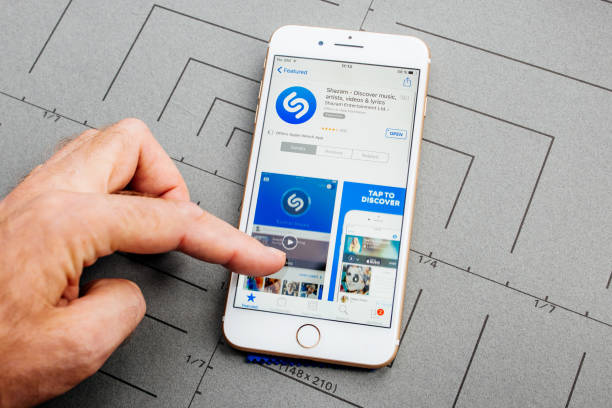A Comprehensive Guide to the Growing Use of Check-In Kiosks in Event Management
Event planning requires more in the digital age than just interesting activities, a top-notch location, and exhibitors. The primary responsibility of an event organizer is to improve and simplify the guest experience, and self-check-in kiosks are the ideal means of achieving this goal.
The success of your event may be increased with check-in kiosks since they provide a number of advantages such as shorter wait times, quicker and more secure check-ins, better branding, and even more inclusive attendees experience.
Additionally, we will go over check-in kiosk definitions, kinds, and how to choose the best one for your next event in this blog article.
That giving customers simple access to data, products, and transactions in public areas, interactive kiosk software strengthens the client experience through the capability of users to interact with digital displays using touch, voice, or gesture commands.
How Does a Check-In Kiosk Operate and What Is It?
Your best option for a self-service terminal is a check-in kiosk, which makes event registration easier by letting guests check in independently without help.
Check-in kiosks with touchscreen interfaces are placed at registration desks or event entrances.
Using these check-in kiosks, guests may print badges, confirm registration data, and have access to important event materials like timetables and maps.
Check-in kiosks assist shorten wait times, increase security, and enhance your entire event experience by automating the check-in process.
This is how an average kiosk for check-in operates:
Attendees of your event approach the kiosk and use the on-screen interface to confirm their registration information.
By ensuring that the attendee’s information is already in the system, the check-in kiosk helps to save time by preventing manual data input.
The kiosk eliminates the need for separate badge printing stations by instantly creating individualized badges for guests after the data are verified.
In order to facilitate guests’ easy navigation of the event, the check-in kiosk may also show crucial event information, such as speaker biographies, venue maps, and session schedules.
The check-in kiosk enables guests to make any last-minute adjustments to their registration data if they discover inaccurate or outdated information in the systems for whatever reason.
What Are the Advantages of Self-Check-In Kiosks?
It is anticipated that the worldwide market for self-service kiosks will reach $43.65 billion by 2028, with a compound annual growth rate (CAGR) of 8.71% from 2022 to 2028.
However, why are self-check-in kiosks being purchased by event planners? Stated differently, what are the benefits of these kiosks apart from expedited check-ins and event security?
The following are a few of the main advantages that self-check-in kiosks provide:
Increase Attendee Contentment
Long lineups are unpleasant for everyone, particularly at events. Attendees may register quickly and easily with the use of check-in kiosks, which allows them to enter the event and become involved sooner.
A digital signage kiosk is a powerful tool that companies can use to engage consumers, provide targeted information, and simplify service in a variety of venues, including retail, transit hubs, and corporate settings. It combines dynamic visual displays with interactive functionalities.
Free Up Employee Time
Bid adieu to labor-intensive manual registration procedures that impede your staff’s productivity. Your staff can concentrate on having more meaningful conversations with attendees, attending to their requirements, and making sure they have a great time at the event while kiosks will take care of the check-in duties.
Reduce Data Entry Mistakes
All of us have been irritated by typos and errors in manually input data. With the use of check-in kiosks, guests can easily update and confirm their personal information, cutting down on mistakes and guaranteeing correct data gathering for next analyses and marketing campaigns.
Boost professionalism and brand recognition
Tailor the kiosk interface to complement the branding and message of your event. It leaves a lasting impression by bringing a professional touch to the registration process and reinforcing your brand identification among participants.
Acquire Important Knowledge
Not only do contemporary kiosks expedite the check-in procedure. They also provide insightful real-time data on the preferences and conduct of attendees. Utilize this data to monitor attendance trends, make necessary staffing adjustments, and gain knowledge that will help you design events in the future.
What Kinds of Check-In Kiosks Are There?
After learning about the many advantages of self-check-in kiosks, you may be considering whether you can use one at your next event.
Sadly, there is more to the solution than meets the eye. There are several varieties of check-in kiosks available, each with a unique set of benefits. Now let’s examine a few of them:
Contactless Check-in Terminals
Because they reduce physical contact during the check-in process, touchless check-in kiosks are a unique kind of kiosk that are especially pertinent in the current climate of health and safety concerns. With the use of technologies like NFC (Near Field Communication), RFID (Radio-Frequency Identification), and QR codes, participants may check in at these kinds of kiosks without having to touch the screen or any other communal surfaces.
Self-Serve Panels
Attendees may check themselves in at these stand-alone check-in kiosks without help from personnel. They may be arranged thoughtfully for easy access across the event space and often include touchscreen interfaces.
Tablet Computers
Compact and portable, tablet-based kiosks provide features comparable to self-service ones. Because they are often handled by event personnel or put on stands, their deployment is more flexible.
A church donation kiosk provides a convenient, secure way for congregants to contribute to their community, allowing for quick, cashless donations that support the church’s mission and outreach efforts.
Apps for Mobile Check-In
Due to the popularity of smartphones, a lot of events now allow guests to check in with their own devices by utilizing mobile check-in applications. To expedite check-in, these applications could make use of QR codes, NFC technologies, or other techniques.
Kiosks for printing badges
Some events allow guests to print their name badges or event credentials on-demand at kiosks in addition to check-in. For a smooth experience, these check-in kiosks are often connected with the check-in system.
Face Detection Devices
Facial recognition and other emerging technologies are being utilized more often at events to provide quick and secure check-in. All attendees must do to validate their identity and get access to the event is have their faces scanned at the facial recognition kiosk.
Combo Kiosks
Certain kiosks combine many functions, such lead capture, badge printing, and self-service check-in. These adaptable kiosks provide a one-stop shop for all registration requirements of participants.
Important Things to Take Into Account When Selecting Check-In Kiosks for Your Event
Excited about the potential of self-check-in kiosks? Are you prepared to change how you attend events? Remain still! Let’s make sure you choose the ideal kiosk for your unique requirements before getting started. Recall that the choice of kiosk may have a big influence on both the ROI of your event and the experience of your attendees.
The following important factors should influence your decision:
Event Dimensions and intricacy
When choosing the best check-in kiosk, you should first determine the size and complexity of your event. The functionality of the kiosk you’ve selected needs to match the size of your event. For instance, a simple self-check-in kiosk with badge printing capabilities would do if your event is small and registration is simple.
However, sophisticated features like ticket scanning, lead capture forms, or on-screen surveys would be needed for a big event with intricate ticketing or registration procedures. At this sizable event, face recognition technology may also be used to streamline and expedite the check-in procedure.
Spending Plan
Set features according to budgetary priorities. As you can see, there are many pricing ranges for check-in kiosks. As a result, you must carefully consider the requirements for your event and rank the features that provide the most value. Spend little more than necessary on features you may not use. Recall that you can always expand the size and complexity of your event to accommodate your check-in kiosk.
Smooth Integration
Make sure that data flows easily. Select a self-check-in kiosk option that works well with the event management program you already use. This makes data synchronization simple, removes the need for human data input, and guarantees data accuracy for reporting and post-event analysis.
Dependable technical assistance
Reduce interruptions by providing strong assistance. Select a supplier that can give dependable technical assistance for the duration of the event. This minimizes downtime and maintains a smooth event flow by guaranteeing quick help in the event of any kiosk failures.
Data Security Is Important
Preserve private information about attendees. Make sure the kiosk system you use for check-in protects attendee information with robust security safeguards. This includes functions like data encryption, safe login procedures, and automatic software upgrades.
Interface That’s Easy to Use
Put the experience of the attendees first. Choose a check-in kiosk that has an easy-to-use UI. Simple menus and unambiguous on-screen directions reduce the need for help and guarantee that your guests have a good time. Easy-to-use kiosks for guests also mean less training for your team.
In summary
To sum up, check-in kiosks provide unmatched convenience, security, and branding possibilities, making them a huge improvement in event management.
Event planners may guarantee the success of their events by optimizing guest experiences, streamlining operations, and using these creative ideas.
The best kiosk perfectly integrates sophisticated equipment with user-friendly design, providing reliable performance and adaptable capabilities that accommodate an eclectic range of requirements, including informational displays and retail transactions.




